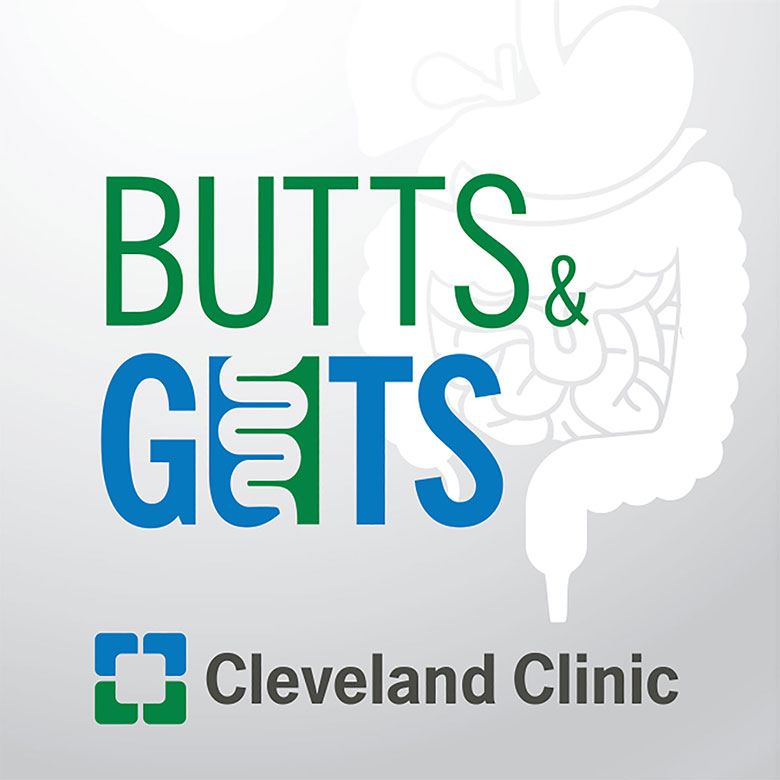Considerations for Patients With Connective Tissue Disorders and Enlarged Aortic Root

There are unique considerations for patients with connective tissue disorders and an enlarged aortic root. Lars Svensson, MD, PhD, Chairman of the Sydell and Arnold Miller Family Heart, Vascular & Thoracic Institute, summarizes the outcomes of literature about aortic surgery in this patient population.
Subscribe: Apple Podcasts | Podcast Addict | Buzzsprout | Spotify
Considerations for Patients With Connective Tissue Disorders and Enlarged Aortic Root
Podcast Transcript
Announcer:
Welcome to Cleveland Clinic, Cardiac Consult, brought to you by the Sydell and Arnold Miller Family Heart, Vascular & Thoracic Institute at Cleveland Clinic.
Lars Svensson, MD, PhD:
For this talk, I'm going to talk about a young patient with connective tissue disorder with enlarged aortic root that may be related to LDS or Loeys-Dietz or Marfan syndrome. And we'll touch a bit on some of the rarer types of inherited connected tissue disorders.
So many years ago, we looked at the cross-sectional area and the ratio to a patient's height as a criteria in patients with Marfan syndrome and timing of surgery, and later we applied that to bicuspid valves also. So essentially what this means is a shorter person with a connective tissue disorder like Marfan's at 4.7 centimeters, we'd recommend surgery versus a taller patient at 6 ft 4, it would be about five centimeters we recommend surgery. And here's just the raw data of the relationship of height to size and the risk of developing a problem. And when you use the ratio, then that, in a sense, smooths the effect of height on the risk of a problem.
Then one of our cardiologists and their team looked at patients with enlarged aortas on CAT scans, calculated the cross-sectional area, and found that in the patients with a ratio more than 10, the long-term survival was not as good in the patients who had aortas less than a ratio of 10. And this was particularly so for patients who had a root enlargement, they had a greater risk of dying over time.
So in the 2010 guidelines for aortic diseases, we had in that the guideline that a ratio over 10 and patients with Marfan was one way to treat patients to avoid the risk of dissection or five centimeters. In the rarer Turner syndrome, we found that the ratio was also something useful to use.
So let's talk about Loeys-Dietz. A few years ago, we did a study of our series of Loeys-Dietz syndrome patients, which, at that time, was the largest in the world and we still have the biggest. And in Loeys-Dietz, it's unclear when to operate on patients, but we felt that probably in that region of 4.2, maybe 4.6 was a reasonable size to operate on patients with Loeys-Dietz. And in patients with Marfan's and who are contemplating a pregnancy, about four centimeters. So there are some characteristics that are unique about Loeys-Dietz. One of them is, for example, that the patients have this what we call a bifid uvula. So there are two parts to the uvula. So that is something that is fairly unique about patients with Loeys-Dietz. The other thing about the Loeys-Dietz patients, you can peel their aorta apart as are shown here during a patient who is having a re-implantation for Loeys-Dietz because of this risk of aortic dissection.
Loeys-Dietz is a pretty aggressive connective tissue disorder and resulted of mutations in the DNA and they develop aortic dissection or rupture to a smaller diameter than most people. They have some skeletal deformities, sort of a tall head, if you like. It's called craniosynostosis. They can have a crooked spine, scoliosis, and pectus, distorted chest, and then they have, as I mentioned, a tall head and face, and they also get hernias, cleft palate or the bifid uvula. And little was known about the surgical outcomes in these patients and this sort of the typical appearance of a patient with Loeys-Dietz or Marfan kind of aorta.
So the guidelines recommended surgery around about 4.2 centimeters, and there've been other institutions that are recommending surgery at four centimeters. But we've seen patients who have Loeys-Dietz and have gotten up to six centimeters and not died from it. So we generally used a cutoff of about 4.5 centimeters for Loeys-Dietz patients and operating on them.
So in this series, that we had fifty-three patients operated this time period. So as you see, this is data, now that's a bit older, but it allowed us to get long-term survival. And so there were 33 patients who had surgery and there were a group of 20 that were followed. And as far as I'm aware, we've not had any deaths in the patients who we have followed who had a smaller-sized aorta. So using that 4.2, 4.5 centimeter cutoff seems to be reasonable in patients with Loeys-Dietz.
So in the patients who had operations, the operation we did electively most often was a valve-preserving re-implantation of the valve. In the patients who had the re-implantation operations and elective surgery, there were no deaths. There were two deaths in patients who had emergency surgery or urgent surgery, and there was one patient late after surgery who had died. The thing about patients with Marfan's or Loeys-Dietz who have aortic dissection and have to have emergency surgery is over time they will require multiple operations. So in this series, they required 81 operations, and this was in 33 patients. So a third of them required multiple operations, and that's mainly because of the results of aortic dissection.
Here's the outcomes and survival out to 20 years, and very good results when you consider this population normally without treatment has a very poor prognosis. In fact, in Marfan's syndrome before the surgical era, the average length of survival was 32 years.
Here's the difference in freedom from re-operation by patients who had no dissection versus dissection. And you see a big difference here. At 10 years, 87% of patients who had no dissection were free from a re-operation at 10 years. Fairly simplistic analysis, but basically surgical outcomes are excellent with root replacement and it's a very effective operation for preventing dissection. After dissection, a lot of these patients require multiple operations, and that's why patients need close long-term surveillance.
One comment just to make, as far as TEVAR, which is stenting of the descending aorta and Loeys-Dietz or patients who have Ehlers-Danlos seems to be a high risk procedure. And same with Marfan's, we generally believe it's better to do an open operation in that group of patients. Implications, early intervention and prophylactic surgery is critical, the cutoff of about 4.2 centimeters appears reasonable and long-term follow-up is necessary.
All right, so the next topic I'm going to cover is looking at re-implantation operations long-term in patients with connective tissue disorders. Our first study was a 178 patients up to 2011. And there was a mixture of patients, Loeys-Dietz, Ehlers-Danlos and Marfanoid patients, and then the rare group of the NOS type of connective tissue disorders. What about safety? There were no deaths in this operative series and the effectiveness looked really good out to eight years. Freedom from aortic valve re-operation was also very good out to six years.
In 2020, we updated this series of 214 patients now with connective tissue disorders with no deaths. Freedom from re-operation was 97% at 10 years. So we decided to evaluate the series and compare it to patients who did not have connective tissue disorders and had the re-implantation operation up to the 2020. So 859 patients, most of them had Marfan's, and once again, we still had not had any deaths for the re-implantation operation. Aortic regurgitation over time was pretty good in the series, and risk of re-operation was 97% at 10 years and 95% freedom from re-operation at 12 years. Survival in this series, also excellent at 91% 12 years after surgery. When comparing the two groups, these are matched patients, basically no difference as far as the risk of aortic regurgitation over time, and re-operation risk, also very low in both categories out to 10 years. Survival, also excellent, as I pointed out earlier in comparing the outcomes.
So our conclusions from this study was that re-implantation in patients with connective tissue disorders is obviously safe with no deaths and very effective as far as freedom from re-operation. While there were a lot of concerns because the leaflets show myxomatous tissue, the durability still is excellent despite that, and re-implantation is the preferred operation in patients with connective tissue disorder.
So what about the risk of later aortic dissection in patients who've had root procedures? We looked at our patients for this risk. So we had 61 patients who developed aortic dissection after having had a root procedure. We had done 664 valve preserving procedures and nine of them had developed aortic dissection over time. Average age of patients was 57, and the average time from the initial procedure to dissection was 5.3 years. And 36% of the patients had a connective tissue disorder, mostly Marfan's, and they were slightly younger. And the mean arch diameter in this series was 4.7 centimeters when this happened.
It appears rare after valve preserving procedure that a patient develops aortic dissection, but it seems to be a risk factor in patients with connective tissue disorders and most can be managed medically after this happens. Most of these dissections are on the descending aorta and thoracoabdominal aorta. They do not typically start at the previous root procedure. Unfortunately, we do see patients with these big fenestrations and the valve has been stretched too much and the root typically has been very large and severe aortic valve regurgitation. And in that situation, these leaflets cannot be kept.
So the re-implantation operation in patients with three-liter valve, whether inherited connective tissue disorder patients or just patients who show up with a big root in about 50% of our patients don't have a family history of aneurysms, this operation holds up very well long term, and this is something that we reassure is the way to treat patients with connective tissue disorders. So I hope you find that useful and just an overview of some of the operations we do.
Announcer:
Thank you for listening. We hope you enjoyed the podcast. We welcome your comments and feedback. Please contact us at heart@ccf.org. Like what you heard? Subscribe wherever you get your podcasts or listen at clevelandclinic.org/cardiacconsultpodcast.

Cardiac Consult
A Cleveland Clinic podcast exploring heart, vascular and thoracic topics of interest to healthcare providers: medical and surgical treatments, diagnostic testing, medical conditions, and research, technology and practice issues.



